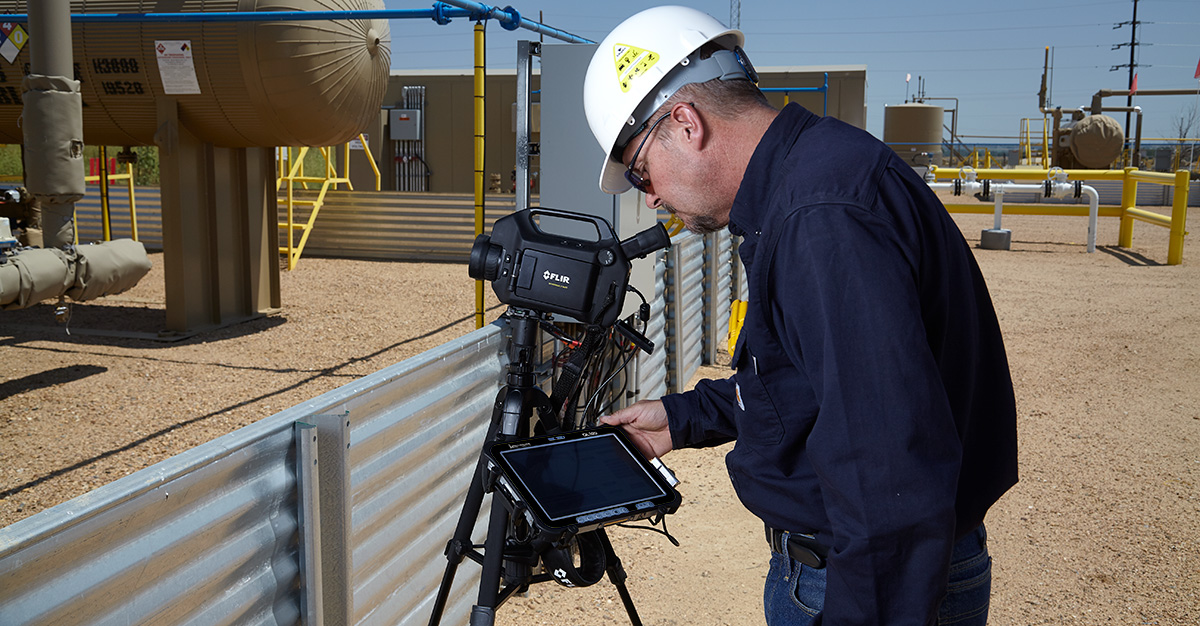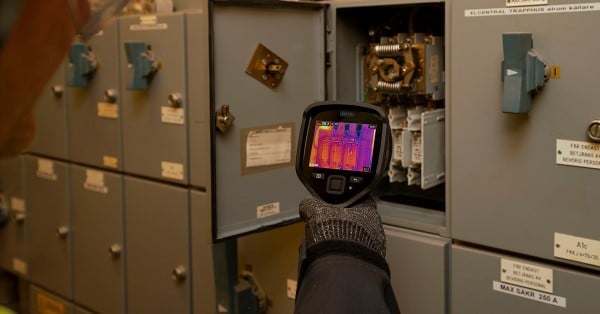5 Tips for Using the FLIR QL320 Successfully

What critical steps should you take to ensure all your inspections provide useable data?
1. REMOVE FOREIGN OBJECTS FROM THE SCENE
The algorithm used to quantify emissions uses changes in pixel intensity to quantity emissions but cannot differentiate from those changes being a gas leak or a foreign object (like an LDAR tag) hanging from the component being inspected.
2. PAY ATTENTION TO DELTA T
With the sophisticated equation used and the solution comparing pixels moving across the image, the use of a tripod to keep the imager stable is a must, particularly when using the volumetric or mass quantification readings.
3. DON’T SWEAT THE SMALL STUFF
To understand how QOGI works, you must understand the three elements that make up the “OGI Triangle”: the presence of a gas (ɠ); the presence of a camera filter that matches the absorption of the gas in question (α(λ)); and a sufficient Delta T (ΔT). This last element represents the temperature difference between the background and the temperature of the gas, which equals the ambient air temperature. Delta T is the only element the user manually inputs that will affect the reading, therefore a Delta T of at least 2°C is required.
4. ENSURE A STABLE SETUP
With the volumetric and mass flow readings, ensuring the leak is centered in the middle of the imager is key. The algorithm considers the leak moving from the center of the image across the boundary (blue ring) for accurate quantification readings.
5. CENTER THE LEAK IN THE VIEWFINDER
QOGI is a great technology to quantify leaks but has limitations when looking at the smallest leaks. A good rule of thumb is to focus your quantification efforts on leaks that are large enough to see without switching to high-sensitivity mode (HSM) on your FLIR OGI camera.

The FLIR QL320 has the built-in tools needed to validate leak surveys. With this device, you can determine mass leak rates (g/h, lb/h, MT/h), volumetric leak rates (cc/min, L/min, or SCFH), or concentration (ppm-m) for most hydrocarbon gases. When used with a FLIR OGI camera set to Q-Mode, the QL320 gathers relative information in the camera and post-processes the data for quantified results without the need to tether directly to the camera.
Click here to read more about quantitative optical gas imaging. We also offer online tutorials here to get you started with the FLIR QL320, and help you use it like a pro.

